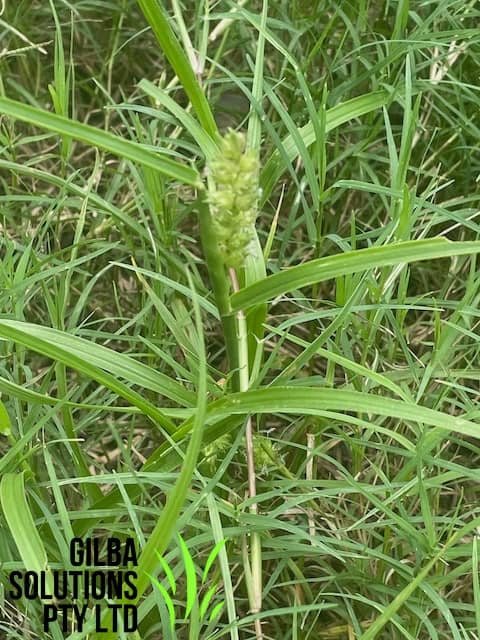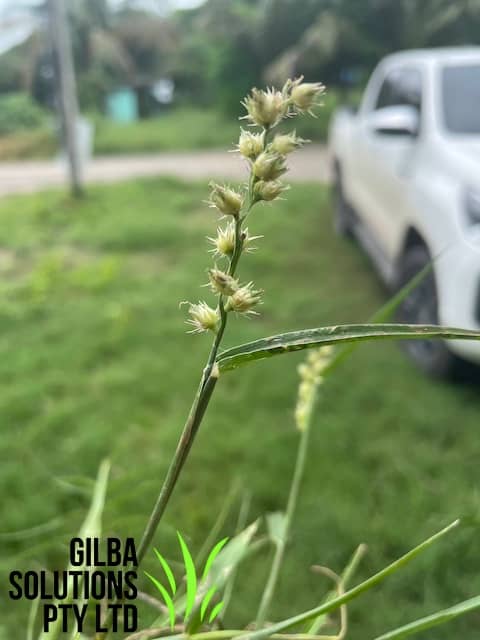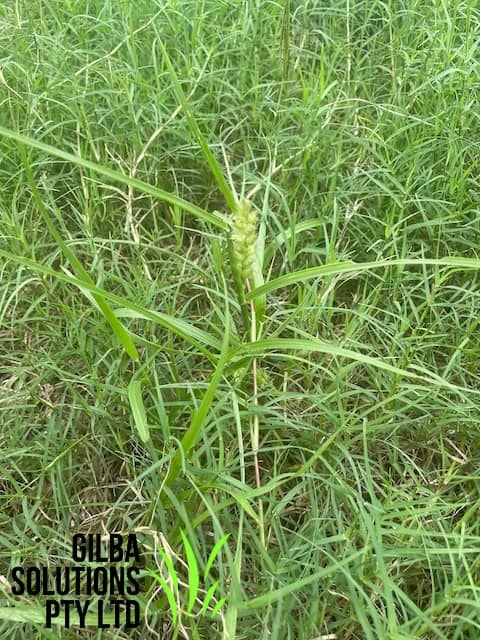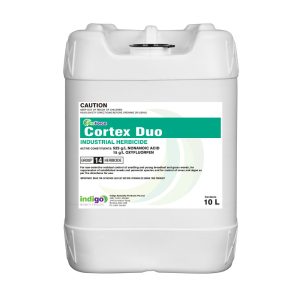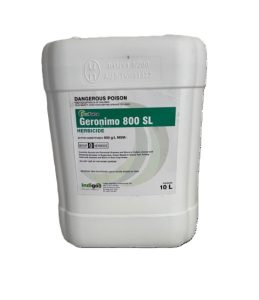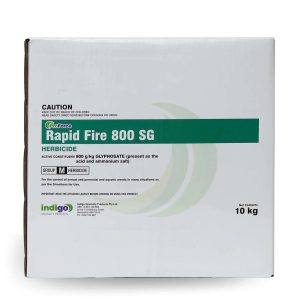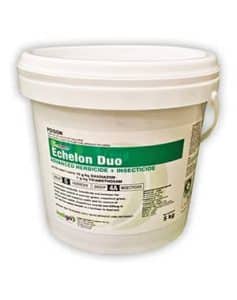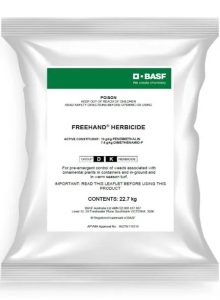Mossman River Grass (Cenchrus echinatus).
Mossman River Grass is also known as Innocent Weed, Hedgehog Grass and Burr Grass. It is an uprght, loosely tufted short-lived annual grass that reproduces by seeds, which are mostly spread by spiny burrs. So its one to keep an eye on like Caltrop.
After you read this, you will be able to:
- Identify Mossman River Grass, Hedgehog Grass or Innocent Weed.
- Know the habitat of Burr Grass or Hedgehog Grass.
- Know the best options to control Innocent Weed or Innocent Weed.
Why is Mossman River Grass a Problem Weed?
- Mossman River grass is an aggressive weed grass and competes for light, moisture, and nutrients.
- It produces burrs which have sharp, spiny bracts and hairy bristles. These can injure people, and animals, and also contaminate wool.
- Mossman River Grass spreads quickly as the burrs attach to animals, machinery and clothes. They also spread in water.
- Toxic and causes oxalate poisoning in sheep, cattle, horses and donkeys.
Mossman River Grass is a weed of tropical, sub-tropical, semi-arid and arid climates that infests footpaths, urban parks, lawns, roadsides, disturbed sites, waste areas, coastal areas, waterways, wetlands, pastures and crops.
The distribution map for Mossman River Grass is courtesy of The Atlas of Living Australia.
How to Identify Mossman River Grass.
Photosynthetic Pathway: Mossman River Grass is a C4 Weed.
Category: Grass
Flower: Mossman River Grass has a spike-like flower head that is 3 to 10 cm long. When the grass is young the flowers are red or purple-green, but as the it matures the flower heads become a straw or dark brown colour.
Height: This grass grows to a height of 25 to 60 cm.
Leaf length: The leaf blades of Mossman River Grass are 5 to 25 cm long and tend to have hairs along their margins. The leaf sheaths on young plants and lower stems are often red or purple.
Leaf width: The leaves of Innocent Weed are 3 to 12 mm wide.
Reproduction of Mossman River Grass.
As long as the area is frost free and there is adequate soil moisture, Mossman River Grass germinates and establishes all year round. However, most seeds germinate and grow rapidly in the hot humid period of the late Spring and the early Summer. They then mature within a year.
Young Mossman River Grass forms dense clumps, and produces erect flowering stems that form burrs between January and May. During the Winter most of the plants die, except in the tropics where it continues to grow throughout the year.
Each burr produces 3 seeds, so each Mossman River Grass plant produces around 1000 seeds. The first seeds germinate within months, and the other two remain dormant for up to three years. These seeds establish from depths of up to 20 cm below the soil surface, and remain viable for up to 5 years.
Comments: Mossman River Grass tends to have shallow, fibrous roots but on occasion these can be more than 30 cm deep.
Habitat: It is common to find Hedgehog Grass in drier regions with rainfall of 250 to 600 mm, and in sandy to light soils. You do not often find this weed grass on heavy clay soils.
For more information on weeds check out our weed ID Chart.
How to Control Mossman River Grass.
You can control Hedgehog Grass by cultural and chemical means, but successful management of this weed is best if you adopt an integrated approach. The key to managing this weed grass is to destroy young plants before they seed.
Cultural Control of Mossman River Grass.
- Maintain a dense turf cover. This limits the spread of this grass because it is a weak competitor.
- Properly maintain your turf, and carry out cultural practices such as soil testing, grass selection, mowing, fertilizing and irrigation. This produces a dense, healthy lawn that prevents many weeds from becoming a problem, and that includes Burr Grass.
- A dense turf canopy discourages this weed as it thrives in high light environments. A dense turf canopy will prevent its establishment and spread.
- If the population is not too high, hand weeding works to control Mossman River Grass. Aim to remove all plants that are flowering offsite, rather than leave them on the ground. This ensures that no viable seed remains.
- Mossman River Grass is tolerant of mowing.
Chemical Control of Mossman River Grass.
You can control Mossman River Grass when you prevent it from seeding. You need to make several treatments to control any new seedlings as they emerge. The aim is to reduce the seed bank, and then keep it at a low level.
Pre-emergent herbicides are successful to control Hedgehog Grass in cotton, sunflowers, soybeans, pulses, lucerne and vegetables. However, these aren’t always effective due to the fact that seeds can germinate at depths of up to 20 cm.
Pre-Emergent Herbicides for Mossman River Grass.
Your best options are:
If you use these for Crowsfoot Grass or Summer Grass or Poa annua they also indirectly prevent Mossman River Grass.
Post Emergent Options for Mossman River Grass.
If Burr Grass does break through your pre-emergent barrier, the next option is to use a selective post-emergent herbicide.
Currently, nothing is registered in Australia for the selective control of Mossman River Grass in turf grass. All the post emergent herbicides below are registered overseas for Innocent Weed.
Options for Innocent Weed include:
- MSMA (ProForce Geronimo). You cannot use this on home lawns, and is not labelled in Australia for this weed. This is most effective if you apply it when the day time temperatures are about 24°C.
- US work in couch shows that Trifloxysulfuron (ProForce Recondo) provides 4 weeks of control of Innocent Weed but it recovers 8 weeks after treatment.
Non Selective Options.
Glyphosate works as a non selective option to control Mossman River Grass. If you use Glyphosate and water quality is an issue then we recommend the use of ProForce Manta Ray.
The following kill all vegetation and have a long-term residual to prevent any regrowth.
- Renegade. This stops germinating weeds for up to 12 months, and reduces the need for multiple herbicide applications.
- Numchuk Quad. Numchuk Quad gives effective post and pre emergence control for up to 12 months.
- Cortex Duo. This gives a rapid knockdown of Mossman River Grass and residual control for up to 3 months. It is also safe to use around trees.
Table of Non Selective Herbicides for Mossman River Grass.
Product | Active Ingredient | Group | Use Rate/Ha |
Glufosinate 200 | Glufosinate-ammonium | 10 | 1 to 6 L |
Rapid Fire 800 | Glyphosate | 9 | 0.9 to 1.35 Kg |
Numchuk Quad | Terbuthylazine + Glyphosate + Amitrole Oxyfluorfen | 5 + 9 + 34 + 14 | 20 to 25 L |
Cortex Duo | Nonanoic Acid + Oxyfluorfen | 14 | 7 L/1000L |
Renegade | Bromacil | 5 | 3.5 to 6.5 Kg |

